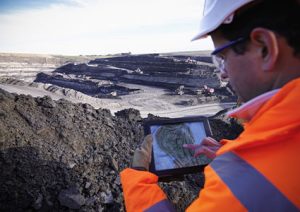
How mining companies can close the talent gap By Stefan Weisenberger
For mining companies, the talent squeeze is real. And according to McKinsey, it’s not likely to loosen anytime soon.
In a recent report from the global consulting firm based on a survey of mining industry senior leaders, 71 percent indicated the talent shortage is hampering their companies’ ability to meet production targets and strategic objectives. A larger share, 86 percent, said it’s harder to recruit and retain the talent they need compared to two years ago. What’s more, McKinsey said: “We expect this trend to continue.”
Not only is building and managing human capital among the most formidable challenges the mining industry faces, but it is also intertwined with other pressing issues, including meeting ESG and sustainability requirements and goals, and remedying reputational blemishes resulting from safety-related incidents, for example.
As frustrating as the talent shortfall has been for companies across the mining industry, some are finding inventive, forward-thinking ways to gain an edge over the competition in closing that gap. Here are several that in my work with mining concerns around the world, I’m seeing yield particularly promising results.
Redoubling efforts on the productivity and operational efficiency fronts
One angle from which to attack the talent gap is by focusing on improving operational productivity and efficiency. “Looming challenges make productivity growth an imperative,” McKinsey asserts in a report about productivity across industries. “Workforce shortages, debt, inflation, and the cost of the energy transition are powerful headwinds. All will be easier to confront with higher productivity.”
Autonomous mining and other intelligent automation technologies are one way to address the talent shortfall. As Canada-based Teck Resources is discovering by deploying autonomous haulage systems at certain sites, automation reduces safety risk, improves productivity and makes operating costs more consistent. Remotely operated hauling trucks and other machinery are increasingly prevalent at mining sites in Australia, Canada and Africa.
To further close the talent gap, mining companies can also streamline and centrally manage extraction and business processes, so they rely less on human intervention, and boost productivity by providing remote workers with new mobile tools.
 Trying new tactics to turn an organization into a talent magnet
Trying new tactics to turn an organization into a talent magnet
Currently, “mining is not an aspirational industry for young technical talent to join,” McKinsey observes, noting a 63 percent drop in mining engineering enrollment in Australia since 2014 and a 39 percent drop in US mining graduations since 2016.
Reversing these trends requires creative recruiting approaches to overcome the safety and ‘dirty industry’ stigmas that have tainted mining’s public image.
Cultivating local talent through community engagement is one such approach. Canada’s Lundin Mining has a program that trains people and invests in educational and digital infrastructure in local communities in which the company is active. In Ecuador, for example, a training program graduated more than 300 people, 85 percent of whom got jobs with Lundin Gold.
Companies can also differentiate themselves in the talent market by showing a progressive approach to safety. Vale, for example, has developed a mobile risk assessment app that can be used offline at mining sites. These are the kinds of advanced safety capabilities companies need to not only develop but tout in their recruiting efforts.
Mining in general struggles to compete with other ‘sexier’ industries for younger, digitally inclined talent. To appeal to that demographic, mining companies can modernize their image by portraying themselves as hip, tech-forward organizations where employees can work with emerging technologies (AI, machine learning, drones, autonomous vehicles) and play a role in exciting new business models and products, such as green steel, for example.
Drawing from a pool of well-trained contractors
Contractors provide companies with great flexibility to bridge the talent gap. But because they can be prone to accidents, it’s incumbent upon companies that rely on them to provide thorough training, not just an ID badge and access, but an onboarding program that ensures proper licensing, certifications and training, preferably via a digital platform that makes it easy to track progress and access training resources.
Finding creative ways to keep people you value
How to keep top-shelf talent once you have it? Companies like Teck Resources are doing so by offering people plentiful upskilling and reskilling opportunities that focus on emerging digital tools, knowledge and skills, and enable them to learn on their own terms with self-managed resources. Training is just one of many facets of the heightened employee experience companies need to be intentional about providing through benefits, hands-on access to tech tools, opportunities to make a difference in local communities, and opportunities to advance and move within the organization.
Backing up your ESG and sustainability talk with action — and touting that action to gain an edge in the talent marketplace
Through the work they do on ESG programs, carbon reduction, and circular economy initiatives, mining companies have a golden opportunity to recast themselves as resource providers and catalysts for positive change in the communities in which they operate. Lundin Mining, for example, is pumping resources into communities by helping local entrepreneurs launch new businesses, many of them climate- and sustainability-related. In 2021, it supported 650 small businesses that created 2000 jobs and generated
$44 million in revenue, much of which went directly back into those communities, according to Erin Johnston, Lundin Foundation Board and Managing Director.
When actions like these succeed and are well-publicized, the connection people feel to your company and brand grow stronger. Suddenly they don’t view your organization merely as a means to punch the clock and pull a salary, they see it as a desirable place to build and master skills, explore and advance along a career path, and do meaningful, impactful work for a company they care about.
For a list of the sources used in this article, please contact the editor.